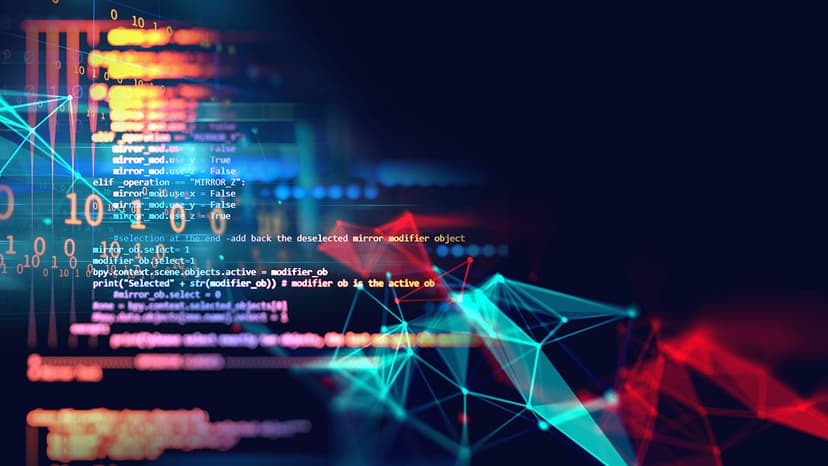Navigating Dark Data with AI: The Route to Smarter Decision-Making
Traditional programming instructions guide machines through processes with precise, pre-defined rules. These instructions work effectively for structured data, which is organized into tables or predictable formats. Yet, our world contains vast amounts of unstructured data that do not fit into these categories. From social media posts to satellite imagery, this "dark data" poses challenges for traditional data processing. How does AI handle unstructured data to provide practical solutions, such as navigating a bustling city's traffic?
AI, particularly through machine learning (ML), addresses unstructured data differently from traditional programming. Instead of relying on explicit instructions, machine learning algorithms learn from data. They build predictive models by identifying patterns, anomalies, and relationships within datasets, regardless of their chaotic nature.
The Limitations of Traditional Programming in Unstructured Data Environments
A traditional programmable computer operates under a set of pre-determined rules. Consider a navigational system finding a route through a city. A standard system uses algorithms based on clear inputs, like the current street layout and historical traffic patterns. It struggles with real-time changes, such as weather conditions, traffic accidents, or construction work — variables that do not fit neatly into its programmed parameters.
The Adaptability of Machine Learning
In contrast, a machine learning system is not constrained by rigid rules. It can adapt and learn. By processing extensive data on past traffic patterns, weather conditions, and other dynamic factors, the system learns to predict future conditions independently. The more data it processes, the better it becomes at adapting to new situations.
Supervised, Unsupervised, and Reinforcement Learning
Machine learning encompasses various forms, each offering different approaches to tackling unstructured data:
-
Supervised Learning: The AI system learns from labeled training data. For traffic scenarios, this might involve historical data labeled with terms like "traffic jam" or "clear streets." After training, it can predict future traffic conditions based on new data.
-
Unsupervised Learning: This method does not use labeled data. Instead, the system identifies patterns within the data itself. For example, it might find that certain intersections frequently experience congestion at specific times and adjust its route guidance accordingly.
-
Reinforcement Learning: In this model, the system learns through trial and error, receiving feedback in the form of rewards or punishments. An AI navigation system could experiment with different routes, learning which choices lead to the fastest journey over time.
The Role of Neural Networks and Deep Learning
Neural networks, which mimic the structure of the human brain, are critical to this learning process. Deep learning, a subset of machine learning, involves using large neural networks with many layers to model complex patterns in data. When applied to city navigation, neural networks can integrate and analyze various data sources, including satellite imagery, sensors, and real-time traffic updates.
The Power of ML in Action
A practical example of machine learning in navigation is Waze. Waze uses inputs from countless drivers in real-time to map traffic conditions and suggest optimal routes. It constantly learns from the data it receives, adapting its recommendations as traffic changes.
The Advantage of Machine Learning Over Programmable Systems
Why can machine learning analyze dark data more effectively than traditional systems? It is about flexibility and adaptability. Machine learning algorithms excel in complexity and change, becoming more efficient with varied data. Traditional computers rely on their programmers' foresight and imagination; they lack the ability to adapt without manual updates when unexpected variables arise.
ML's Impact on Business and Society
Machine learning's ability to handle unstructured data carries significant implications across various sectors, including healthcare, finance, and transportation. Businesses can utilize ML to gain insights from customer feedback, market trends, and internal processes. Societal challenges, such as optimizing energy consumption or providing personalized education, can also be more effectively addressed by systems that learn and predict needs.
The Continuous Evolution of AI
The field of AI will continue to evolve, introducing sophisticated techniques to manage and interpret the increasing volumes of unstructured data. The capabilities of AI will expand, leading to smarter and more responsive solutions to complex issues, like navigating a fast-paced urban environment.
The shift from relying solely on structured data to embracing unstructured data is guiding us toward a future where AI provides innovative, adaptable, and efficient solutions. By cutting through the noise of dark data, AI helps us make clearer decisions, aligning technology more closely with the complexities of human life and the unpredictable world we inhabit.












